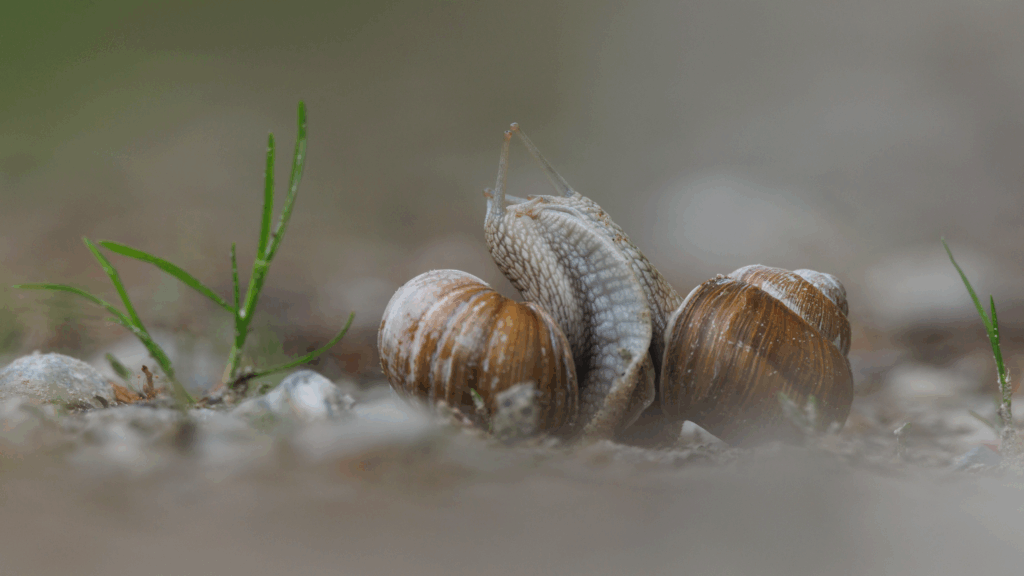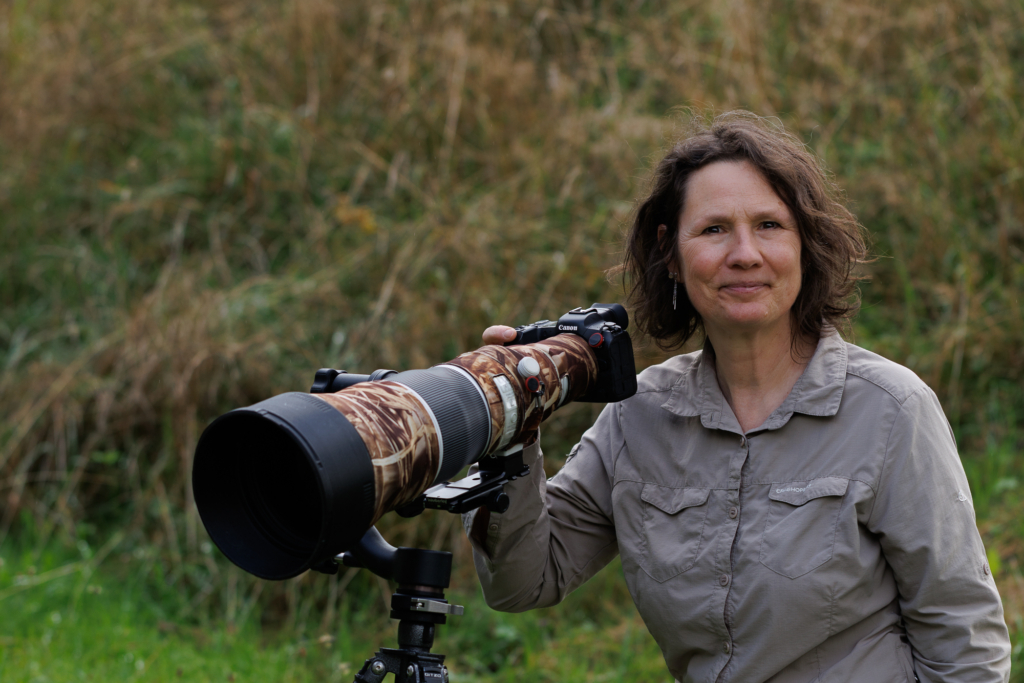I had been out photographing foxes in the forest near my home in Switzerland when, on my way back, I stumbled upon something entirely unexpected: two snails locked in what looked like a slow, graceful dance on the forest path. They were so absorbed in each other that they didn’t notice me at all.
That day, I had my wildlife setup—a 600mm lens with a 1.4x teleconverter—designed for photographing foxes, not snails. It was hardly ideal for something so small and close to the ground, but I couldn’t pass up this rare moment of natural behavior. I lay the camera flat on the sandy path and tried to work around the limitations of my long lens. Framing both snails was tricky. They kept toppling over, scrambling upright again, while I shifted my angle multiple times to keep them both in view. Luckily, the simple backdrop helped: the sandy path and a few scattered grasses subtly framed the scene rather than distracting from it.
These European land snails are hermaphrodites, but reproduction isn’t simple—they perform a fascinating mating dance. As part of this ritual, they rise up and pierce each other with tiny lime “love darts,” stimulating egg production. Watching this quiet, intricate exchange up close was mesmerizing.
What struck me most was how completely unaware they were of my presence. For me, that’s one of the greatest joys of nature photography—witnessing wild behavior without altering it. On this quiet forest path, with the last light of day filtering through the trees, I had the privilege of observing a private moment in the life of two small, unassuming creatures—and preserving it forever.


